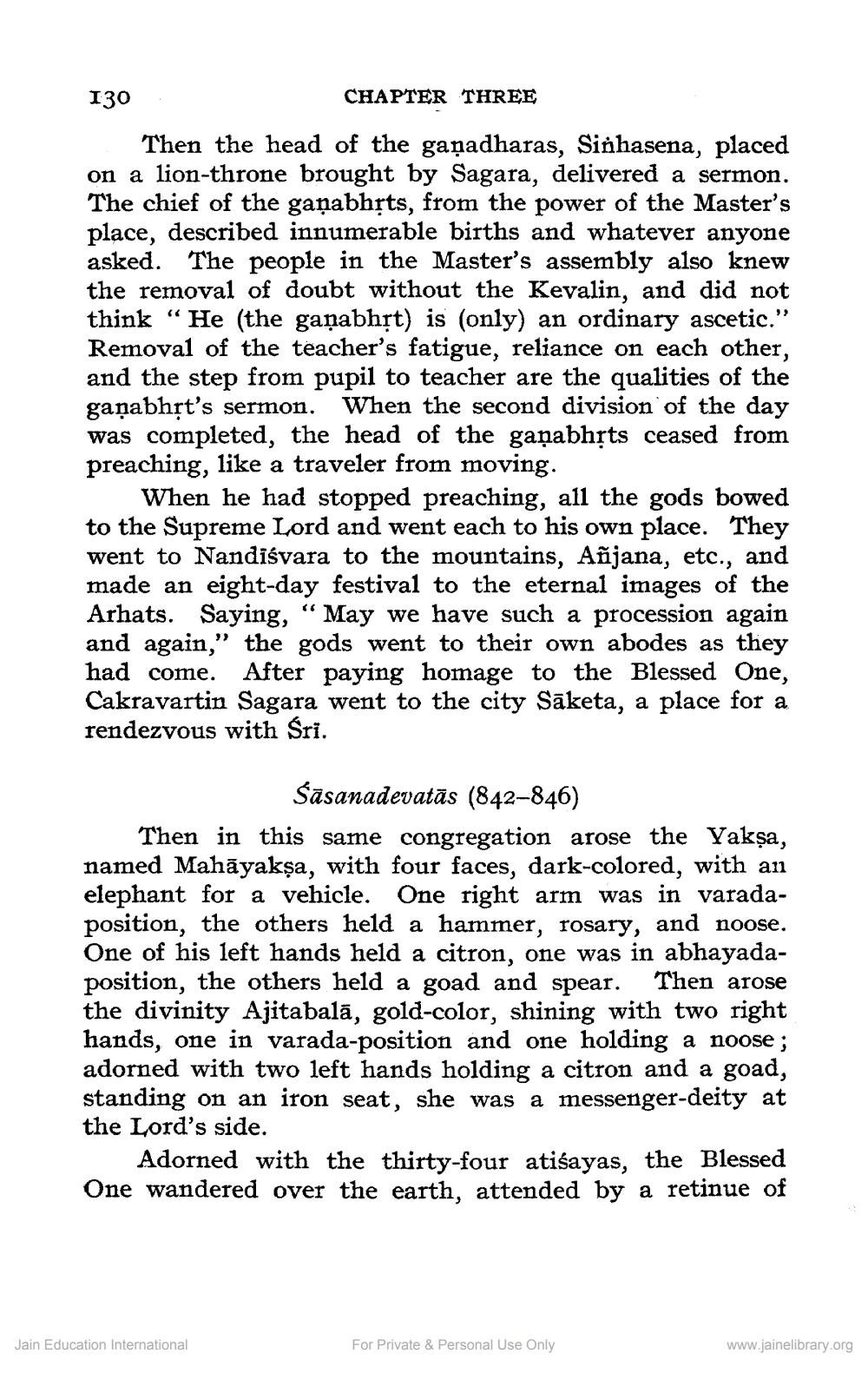________________
130
CHAPTER THREE Then the head of the gañadharas, Sinhasena, placed on a lion-throne brought by Sagara, delivered a sermon. The chief of the gaṇabhrts, from the power of the Master's place, described innumerable births and whatever anyone asked. The people in the Master's assembly also knew the removal of doubt without the Kevalin, and did not think “He (the gaṇabhịt) is (only) an ordinary ascetic." Removal of the teacher's fatigue, reliance on each other, and the step from pupil to teacher are the qualities of the gaṇabhrt's sermon. When the second division of the day was completed, the head of the gaṇabhịts ceased from preaching, like a traveler from moving.
When he had stopped preaching, all the gods bowed to the Supreme Lord and went each to his own place. They went to Nandiśvara to the mountains, Añjana, etc., and made an eight-day festival to the eternal images of the Arhats. Saying, “ May we have such a procession again and again," the gods went to their own abodes as they had come. After paying homage to the Blessed One, Cakravartin Sagara went to the city Sāketa, a place for a rendezvous with Sri.
Śāsanadevatās (842–846) Then in this same congregation arose the Vakşa, named Mahāyakşa, with four faces, dark-colored, with an elephant for a vehicle. One right arm was in varadaposition, the others held a hammer, rosary, and noose. One of his left hands held a citron, one was in abhayadaposition, the others held a goad and spear. Then arose the divinity Ajitabalā, gold-color, shining with two right hands, one in varada-position and one holding a noose; adorned with two left hands holding a citron and a goad, standing on an iron seat, she was a messenger-deity at the Lord's side.
Adorned with the thirty-four atiśayas, the Blessed One wandered over the earth, attended by a retinue of
Jain Education International
For Private & Personal Use Only
www.jainelibrary.org




